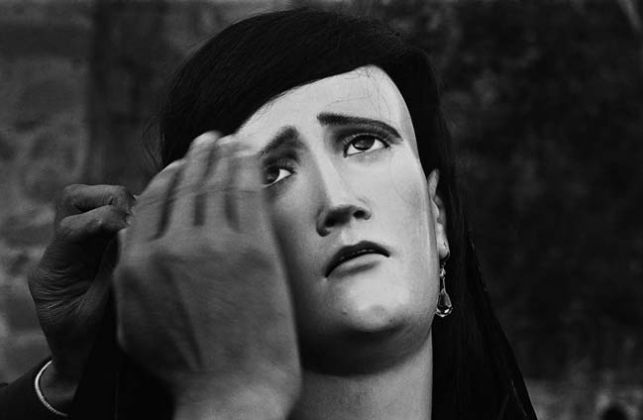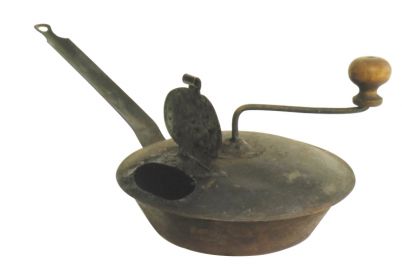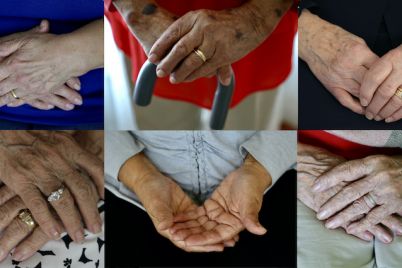The first time I met Vincenzo Pietropaolo and saw his work – more than 10 years ago – was in an exhibition of his photographs about Mexican temporary farm workers in Ontario. Among all the black and white pictures, one in particular caught my attention: nine or ten Mexican workers sitting in chairs around a table with some food and beer cans, or laying on couches in a small and dilapidated cabin. The faces and expressions of the workers were rather sad, and it was not just from the exhaustion of a long shift in the fields. One could feel how much they were missing Mexico and their families. What a powerful picture! Since then, I have become a big fan of the work of Pietropaolo.

Man covers his wife’s grave with sand as the children look on, San Antonino cemetery, Oaxaca
Art and social compromise
Vincenzo considers himself a social documentary photographer… I respectfully disagree. I think that what we perceive of Pietropaolo’s photographs is art. Art which is of course loaded with social content; from immigration to disabilities to working class issues. He reveals social conditions that reflect people’s concerns in their daily lives. That is why the viewer becomes instantly attached to his emotionally-charged photographs.
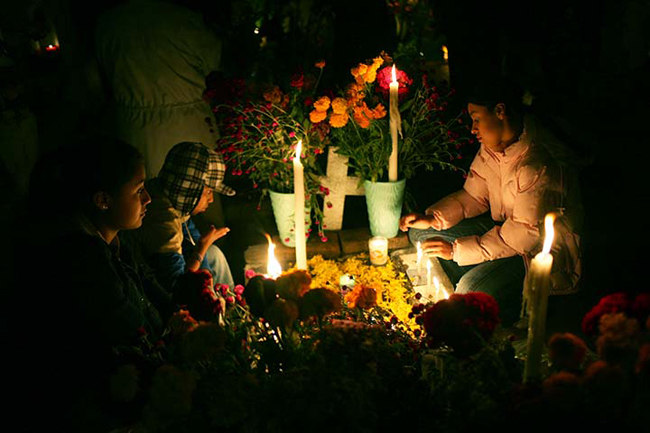
All-night vigil at Xoco cemetery
Foreign view
One of the various virtues of Vincenzo is that, when he’s taking pictures abroad, he does not have the “foreign view” – that arrogant attitude to treat other cultures as picturesque and exotic, like the furtive anthropologist photographing the “Noble Savage.” He establishes a relationship of trust with his subjects, and asks them before taking a picture. A moving example is a series of photographs of a funeral procession in a small town in the southern state of Oaxaca. Vincenzo approached the group of mourners and asked one of them if he could take a few pictures. It was the husband of the deceased. The man looked at him – tired and sad – and said yes. In the resulting sensitive photograph, we can see in his eyes that the man wanted his grief to be known. A few minutes later, Vincenzo was talking with the family, partaking in the traditional drink of mezcal that was being offered by a mourner to sympathizers on the street. It is this empathetic approach — the way he feels and reads the subject — that portrays Vincenzo much better than further explanations.
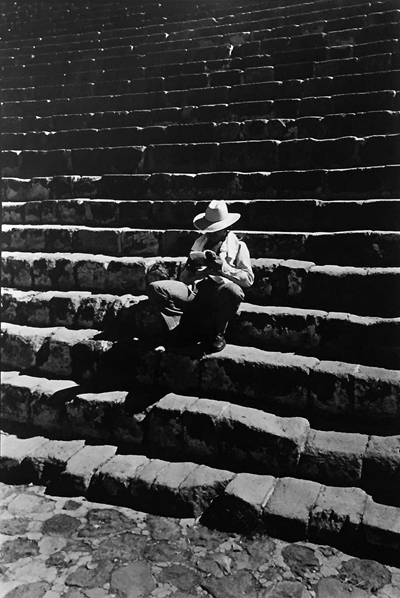
Man reading a book on steps of the Pyramid of the Sun, Teotihuacán
Mexico and Italy
It’s important to note that Vincenzo is a Canadian artist of Italian origin. And Mexico reminds him of his early childhood in Calabria (Southern Italy), before boarding the ship that took him directly to Pier 21 in Halifax, like thousands of other Italians in the fifties and sixties. And, yes, the two cultures have a number of things in common, but the most extraordinary similarity between them that he discovered is their mutual sense of altruism: the way they behave and treat others with kindness. Vincenzo felt humbled by the extraordinary kindness of the campesinos who welcomed him in a small rancho (village) in Guanajuato State when he followed the migrant farm workers from Canada to their homes in Mexico.
Mexico and the Day of the Dead: The Exhibition
Vincenzo’s knowledge about Mexico, and about the Day of the Dead Celebration, is remarkable. The best example is his most recent exhibition “Mexico and the Day of the Dead,” where he was able to exhibit more than 50 photographs in colour and black and white (some of them never shown before) from different projects that he had worked on in Mexico over the last 35 years. The Day of the Dead is one of the most important celebrations in Mexico, and much of it takes place at night in the local cemeteries, when the living gather to welcome the visiting souls of the dead with music, food, laughter and tears. Vincenzo documented the all-night vigil in the famous cemetery of Xoco, in Oaxaca, but the exhibition also included photographs from other parts of the country such as Zacatecas, Morelia and Mexico City.

The exhibition was a success, with more than 2,000 visitors from all backgrounds enjoying Vincenzo’s works. The exhibition included short texts that were as captivating as the images. Vincenzo is known to mix words and images together in his photo essays, and what I found really moving – evidence of the artistry of Vince’s work – is that even Mexican visitors to the exhibition were visibly moved by his photographs (it is not easy for a foreigner to show beautiful art about your own country). In particular, there is one, taken in the archaeological site of Teotihuacán. It’s a black and white image. A man with a hat is reading a book, sitting on the weathered stone steps of the Pirámide del Sol (Pyramid of the Sun). The afternoon sunlight is very brilliant, so it gives a perfect contrast. I’m not sure why it is so attractive for the Mexican viewers, but I like it too! It has everything: the composition, the light. It reveals the artist’s perception of taking the picture in that precise moment that shows the opposite of commonly held stereotypes by “North Americans.”
It is complicated to describe the work of Vincenzo Pietropaolo. I think that the essential characteristic is that he is able to combine diverse disciplines with different topics, such as documentary photography with artistry, and social activism with every day life. All in one precise momentum shot.
Order Vincenzo Pietropaolo’s books at the Accenti bookstore.
Alejandro Monsiváis is a Canadian-Mexican freelance writer. He was the cultural attaché at the Mexican Consulate in Toronto. In Mexico, he worked as an editor, contributor and journalist for various publishers, magazines and newspapers.

